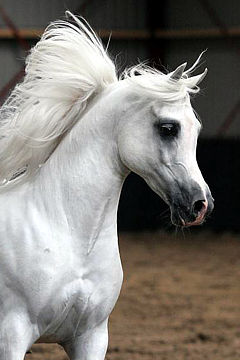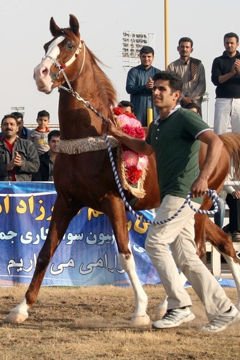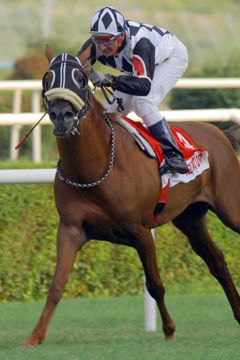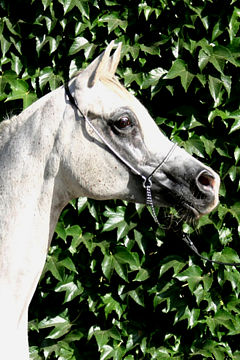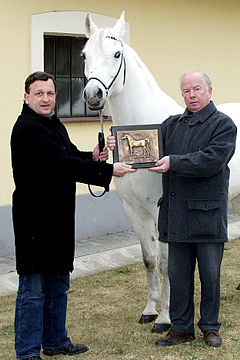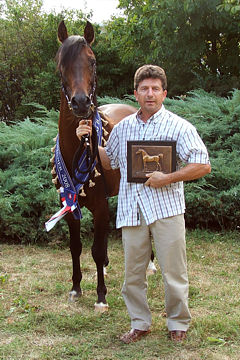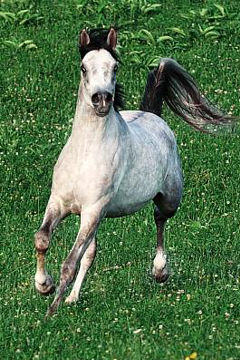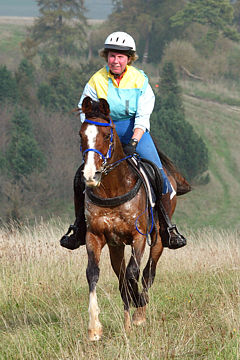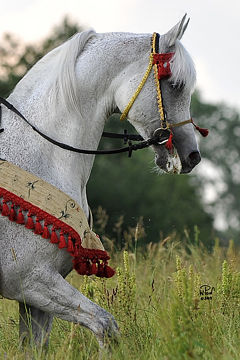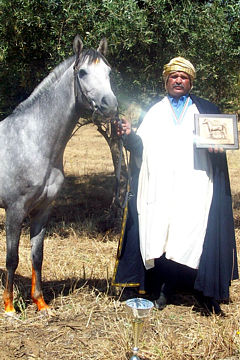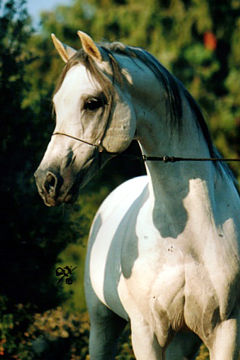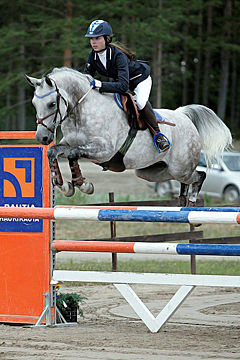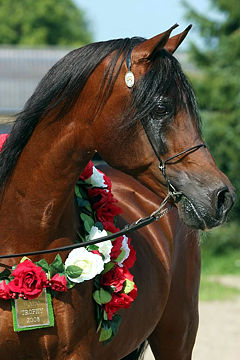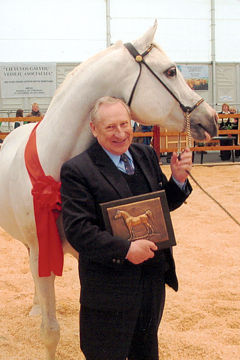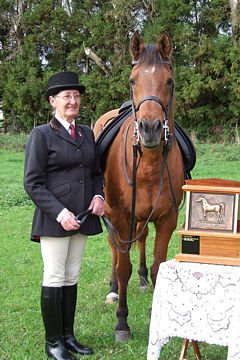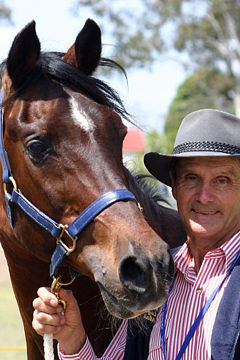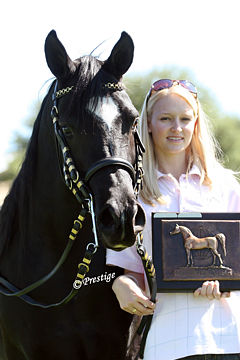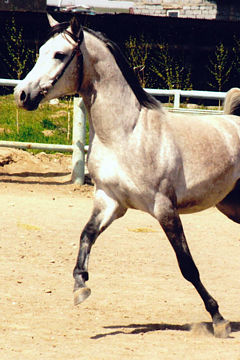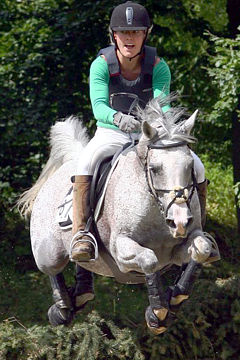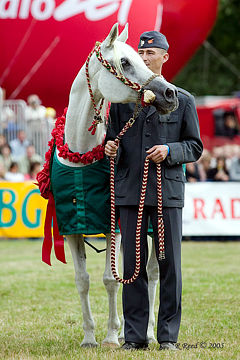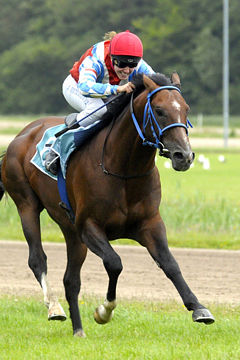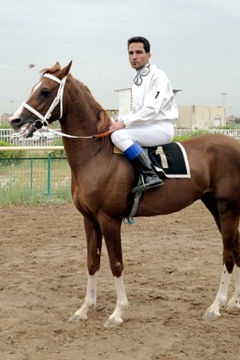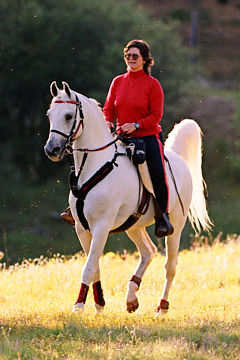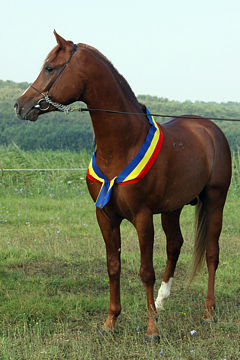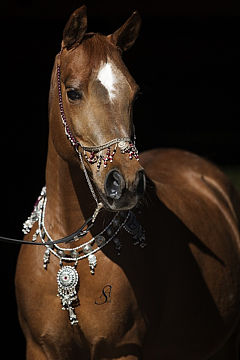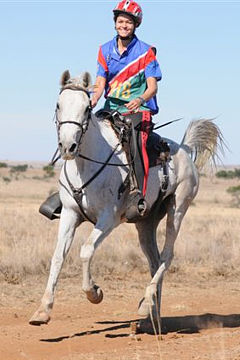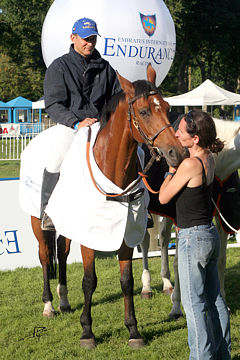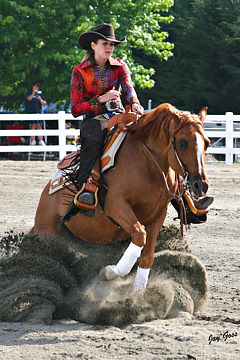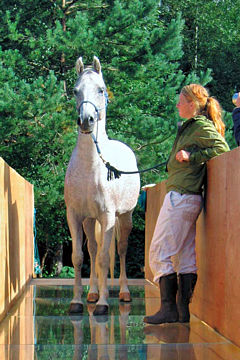
Member Report from Ecuador
REPORT MADE AT THE 2019 WAHO CONFERENCE:
Nathalie Weemaels, Ecuador: Good afternoon Mr. President, Members of the Executive Committee, Delegates, ladies and gentlemen. First of all, I want to thank the Arabian Horse Society of Australia for their hospitality, warm welcome and wonderful organisation. I introduced myself earlier, I am also the Registrar of Arabian Horses in Ecuador but I will do this speech in the name of Mr. Manuel Kakabadse, President of the Association of Arabian Horse Breeders of Ecuador, who apologizes for not being able to attend this meeting.
The Ecuadorian Stud Book includes, as of today, 1,180 Arabian horses. In 2017, we recorded an increase in registrations, related mainly with an increase in imports that represented almost 25% of the entries. Unfortunately, that increase has been followed by a severe decrease of the registrations in 2018 and no imports at all. Only one horse has been exported during the 2017-2018 period.
During the years 2017-2018, the Association of Arabian Horse Breeders of Ecuador, which now includes 41 members, carried out activities focused on exhibiting the beauty and functionality of the Arabian Horse. In 2017 and 2018, the Association organized a total of 3 shows: one National in 2017, and 2 Breeders Cup, one each year. The participation to these shows was of about 50 horses each. All these events included, in addition to halter classes, prospects for endurance tests and sport events. Unfortunately, the Ecuadorian Department of Agriculture cancelled all equestrian and horse events for about two months in 2018, due to an epidemic of Equine Influenza, and amongst these cancelled events was our Arabian Horse National Championship. Although the Association and the majority of its members are mainly focused on shows, Arabian horses are appreciated in Ecuador for endurance riding, but also as multifunctional horses used by the “Chagra”, the traditional Ecuadorian cowboy, to work with the cattle and to parade in the villages.
Endurance riding has developed strongly during the last two years and specially in 2018, with an increase of about 50% in the total number of inscriptions. Last year, 10 endurance rides took place in Ecuador, including 3 FEI events. However, only 15 registered Arabian horses are participating in the official endurance rides, as most of the very few endurance breeders do not register their Arabian foals or imported horses, not even their stallions.
Finally, the Ecuadorian photographer Maria Emilia Moncayo published last year a beautiful book on the Arabian Horse, “Amanecer al Galope – Gallop at dawn”. Thank you for your attention.
REPORT AT THE 2017 WAHO CONFERENCE:
Nathalie Weemaels, Ecuador: Good afternoon, Mr. Vice-President, Members of the Executive Committee, Delegates, Ladies and Gentlemen. First of all, I want to thank His Majesty King Hamad, His Highness Sheikh Isa Bin Salman Al Khalifa and the authorities of Bahrain for their hospitality. My name is Nathalie Weemaels and I am the Registrar of Arabian Horses in Ecuador. Never the less I will do this speech in the name of Mr. Galo Hidalgo Jaramillo, President of the Association of Arabian Horse Breeders of Ecuador who has not been able to attend the meeting.
During the period 2015 to 2017, the Association of Arabian Horse Breeders of Ecuador carried out activities aimed to focus on exhibiting the progress done in breeding show horses of international level and exporting them. In 2015 and 2016, the Association organised 3 shows each year: A National, a Breeders Cup and a provincial one in the south of the country, in the city of Cuenca. The participation in all these shows was of more than 50 horses each.
As a result of the improved quality of show horses bred in Ecuador, the number of exported Arabian horses has increased during the period, especially to the USA. In that sense, it is important to note the great achievement of the mare MD Hibat Allah bred in Ecuador, who won the 2016 US Nationals as Champion Senior Mare. Next to the organisation of the shows the Association organised in 2015 a course on registration, in order to inform the Members of new rules and to improve the quality of markings and descriptions of foals.
Although not as a result of the Association’s work, it is important to mention that for the first time ever, Arabian horses registered in Ecuador participated at the Young Riders and Senior Endurance World Championships, which took place respectively in Chile and Slovakia. Among them are AR Faisan, a gelding bred and trained in Ecuador which achieved 22nd place in the Young Riders World Championship.
About registration, our studbook has now 1,050 registered horses, nevertheless in 2015 and 2016 we received a drop in registrations of about 30% in relation to 2014. While the number of foals born in Ecuador has declined, the number of imported horses has increased dramatically, coming mainly from the USA but also from Argentina in the case of endurance horses. In 2015, 30% of the registrations were imported horses. Thank you very much for your attention.
REPORT AT THE 2014 WAHO CONFERENCE:
Nathalie Weemaels, Ecuador: Mr. President, members of the Executive Committee, delegates, ladies and gentlemen. First of all I want to thank the authorities of Qatar and the Racing and Equestrian Club for their hospitality. My name is Nathalie Weemaels and I am President of the Association of Arabian Horse Breeders of Ecuador. It is an honour for the Association and for all the owners and breeders of Arabian horses in Ecuador to have been accepted as a full Member of WAHO. Thank you very much.
The history of the Arabian horse in Ecuador is fairly recent, indeed there were no known purebred Arabian lines until the 1960s, when the first registered Arabian horses were imported from the U.S.A. Unfortunately, they left no descendants and are not represented in our first stud book that we presented and has been approved by WAHO. The first volume of our stud book, which we will distribute to all of you on CD later, starts with the mare Monalietta, imported in 1977 from the US.A. and ends with the horses born and registered in the year 2012. It includes about 800 horses, of which more than 70% were born in Ecuador. It has been a huge amount of work to put all that together into our first WAHO approved stud book, and I want to thank Kina Murray for her special help.
Today, we are approaching 1,000 registered horses and are registering about 60 foals each year. For the past 5 years we have had an increase of around 10% a year. We are noticing the same increase in the number of members of our Association, which is now about 50. The increase in both horse registrations and Association members is mainly due to the development of endurance in Ecuador, although initially the members were mainly interested in breeding for showing, today the newer members are small breeders or owners of endurance horses. Of our 50 members, about one third are show breeders, one third endurance riders, and the remaining one third are people who enjoy the countryside and family riding with their horses.
Apart from its duties in registering horses and maintaining the stud book, the Association organizes national, regional and breeders shows, we had 3 in total in 2014. These shows include halter classes, with an average participation of 40 horses, and also an Arabissimo Cup which promotes the Arabian horse not only for its beauty but also for its athletic abilities. In this competition, horses must participate successfully in five tests – jumping, barrel-racing, pole-bending, ridden classes and liberty. During our shows we also have lead line riding classes for young children, and very special ridden classes where the riders are wearing traditional Ecuadorian clothes which are the poncho and leather trousers.
Although our Association does not organize endurance rides, we are definitely supporting this activity as four members of our Board are also Board Members of the Endurance Association of Ecuador which is in charge of the organization of that sport. With 10 rides a year, and an average of 70 participants per ride, this discipline has opened a new market for Arabian horses for all, giving them a new use and an opportunity for the breed in Ecuador. The Endurance Challenge is one of our means to promote the participation of Arabian horses in endurance, as the owner of the winning horse is offered the opportunity to participate at an FEI endurance ride in Argentina or Brazil. This Challenge, which is now in its 4th edition, is possible thanks to the kind support of the breeders in those countries, which is also a nice kind of exchange between the breeders and associations of Latin America. Another way our Association is promoting the Arabian horse for its suitability for endurance is through a system of qualification of Arabian endurance horses and their progeny. Our Association has also been sponsoring the organization of the last FEI endurance ride, is organizing endurance seminars, and is also importing frozen semen from proven endurance stallions.
In 2013, the WAHO Trophy was awarded to AR Misterio, an endurance gelding born in 2005 by Padrons Pikaso JM out of AR Tamara, representing 3 generations of horses bred in Ecuador through his damline. AR Misterio was Ecuador’s endurance champion in 2012 and also in the same year won the ACCAE Endurance Challenge. He was bred by Arturo Ribadeneiro Troya’s Cachafaz Stud, and owned by Mauricio Morillo. In 2014, the WAHO Trophy was awarded to MC Antonela, a 4-year old bay mare bred and owned by Mauricio Cuesta Miño, Los Alamos Stud Farm. This is a gorgeous young mare and the first Arabian born in Ecuador to have won ACCAE’s ‘triple crown’ with successive wins in Filly, Junior and Adult mare halter classes. She is a daughter of Maarjan, by Marwan Al Shaqab, out of Ayishaa.
Finally, our Association is promoting the breed through articles in national and international magazines, as well as through the publication of our own magazine called Revista ACCAE, we brought some copies with us which we distributed here this morning, in which you will find many more details of our activities and we hope you will enjoy it. Thank you very much for your attention.
REPORT AT THE 2011 WAHO CONFERENCE:
Nathalie Weemaels, Ecuador: Mr. President, distinguished members of the Executive Committee, delegates, ladies and gentlemen. My name is Nathalie Weemaels and I am the President of the Association of Arabian Horse Breeders of Ecuador, which is also in charge of the Arabian Studbook of Ecuador. It is a great honour to be here today, sharing this occasion with people who have dedicated their lives to Arabian horses. In that sense, I want to congratulate and thank His Excellency and Qatar’s authorities as well as WAHO’s Executive Committee and Executive Secretary for their invitation and commitment.
This is the first time that our Association has participated in a WAHO Conference. Maybe we are anticipating a little, as we are an Applying Member and not yet a full Registering Authority Member of the Organization, nevertheless we hope we will become one very soon. In Ecuador, the first registered Arabian horses were imported in the 1970’s, while our Association and Studbook were created in the 1990s. Since that time we have registered more than 750 horses, of which 77% were born in our country. The main country from which horses have been imported is the USA, from where the majority of our horses are descending. In Ecuador, Arabian horses have mainly been used in shows. Nevertheless, in the last four years, the practice and development of endurance racing has opened a new market and brought us a number of new members, which is about 40, and the number of registered horses is now increasing dramatically. Indeed this year in 2011 we have already about 60 new foals registered. Next to these activities, Arabian horses are also appreciated to do long family rides in the mountains.
Until this year we were organizing only one national championship show per year, normally during the first weekend of June. But from now on we will be organizing three shows a year, one in the capital Quito, one in the city of Riobamba which is at the foot of the Chimborazo mountain which stands 6,300 metres high, and one in Cuenca in the southern part of Ecuador. During our show events we also promote the use of Arabian horses in sport competitions such as dressage, cross-country, and racing, and we also organize a category of morphology and movement for endurance. In 2011 about 10 endurance races have been organized, mostly in the Andes, in the mountains region. In that sense, one of the characteristics of our country is that most of our breeders are raising their horses at an altitude of at least 2,500 metres. It is also at this level that we are training and racing in endurance, which surely offers our horses a particular physical condition. In that sense it is in our plans to support scientific studies on the qualities of Arabian horses bred at high altitude.
As our Association is currently growing, we published the first issue of our ACCAE News magazine, which I have here, I have a few copies if some of you are interested in it. It is also in our plans to publish two more issues of this magazine next year, it is also in our plans of course to produce our first WAHO studbook. We did indeed already publish a studbook in the beginning of the year 2000 but that studbook was not agreed by WAHO. We are also planning to start an importation programme of frozen semen, in order to help our small breeders to improve their production. Finally, we will organize clinics for trainers and judges. To end this presentation, I would like to take advantage of my participation in this important meeting to tell you that we feel the need for more cooperation between Latin American Associations, in order to promote a normalization of the rules and organization of regional events and the sharing of information. Thank you very much for your attention, and I hope you will be visiting us in Ecuador, which is a wonderful country for nature and for cultural tourism, and of course for its Arabian horses. Thank you very much.
STASTISTICS FOR 2011:
Foals registered: Approximately 40 to 50 (some are still pending registration)
Horses imported: 15 from USA
The Asociacion de Criadores de Caballos Arabes del Ecuador (ACCAE) is an Applying Member of WAHO. In 2007 they reported 54 registered foals, and a total Arabian horse population estimated at 500. All foals are parent verified by DNA, at present microchipping is not yet used, and Passports are not yet issued. 5 horses were exported in 2007, and 8 were imported. The use of Artificial Insemination and Embryo Transfer are permitted. Showing and Endurance are the main activities for Arabians in Ecuador.

